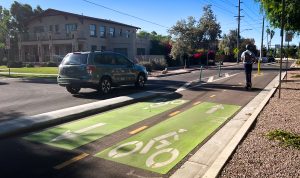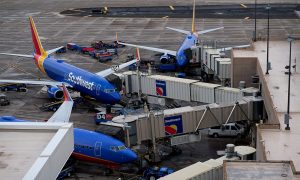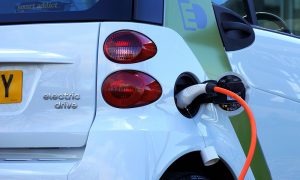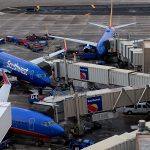Taking care of the environment is not only good for the planet, it can also bring in extra money to airports. The Federal Aviation Administration has awarded $10.2 million in grants to six airports around the country under the Voluntary Airport Low Emission (VALE) program, which encourages facilities to cut emissions and improve air quality.
The program was originally created in 2005 to reduce all sources of airport ground emissions in areas of marginal air quality. VALE helps airport sponsors meet their air quality responsibilities under the Clean Air Act. Through VALE, airports can use Airport Improvement Program (AIP) funds and Passenger Facility Charges (PFCs) to help pay for low-emission vehicles, refueling and recharging stations, gate electrification and other airport-related air quality improvements.
Here’s a list of the projects.
- New Mexico’s Albuquerque International Sunport received $431,479 to help it upgrade the infrastructure to low-emission technology by replacing four boilers in the airport’s central utility plant.
- Hartsfield-Jackson Atlanta International — the world’s busiest airport — used its $102,456 grant to buy two alternative-fuel garbage trucks and convert two passenger vans to cleaner-burning fuel instead of diesel.
- Chicago O’Hare International received $2 million that will allow the airport to install an underground fuel-hydrant system, eliminating the need for diesel-powered fuel trucks. The system will provide fuel for 20 gates in Concourse F.
- Dallas-Fort Worth International Airport will use its $2 million to install 12 electric gates at Terminal B and install and connect seven pre-conditioned air units for parked aircraft. The air-unit connection with terminal power will eliminate the need for diesel or jet-fuel powered auxiliary power while passengers load and unload.
- A $2 million grant received by Seattle-Tacoma International Airport will allow it to install 43 charging units in Terminals A and B to support electric ground support equipment (GSE) including luggage loaders and aircraft tugs. The electric GSE will reduce the use for conventional fuels and reduce emissions.
- And Charleston, West Virginia’s Yeager Airport will use its $3.6 million grant to pay for gate power units and pre-conditioned air units at seven gates. The units will allow parked aircraft to connect to terminal power while passengers load and unload and preclude the need for diesel or jet-fuel powered auxiliary power.
Since the beginning of the VALE program, airports are reducing ozone emissions by approximately 563 tons per year, equal to removing more than 31,000 cars and trucks off the road annually. In fiscal year 2014, the FAA issued VALE grants for nine projects at nine airports for $11.3 million. The FAA has funded 69 VALE projects at 38 airports since 2005, which represents a total investment of $184 million in clean airport technology. That amount includes $146 million in federal grants and $38 million in local airport matching funds.
STORY IDEAS
FAA Airport Environmental Program
Airports Council International-North America’s Environmental Affairs Committee
Benét J. Wilson is co-editor of AirwaysNews.com and blogs at AviationQueen.com. She has been an aviation/travel journalists for more than 20 years. Follow her on Twitter @AvQueenBenet










